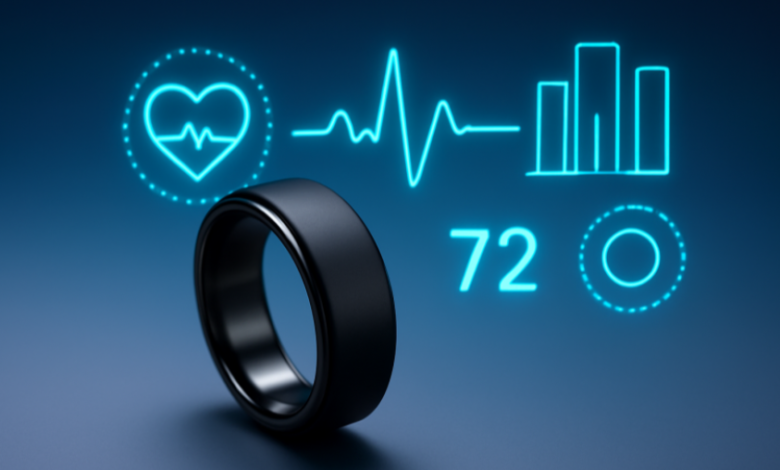What Is a Smart Ring? The Wellness Wearable That’s Changing How We Track Health

In a world where watches, phones, and even shoes can be smart, another tiny device is making waves in the world of wellness: smart rings.
If you’ve been wondering what is a smart ring, you’re not alone. These small but powerful gadgets are quickly becoming one of the most talked-about tools in personal health and fitness.
A Ring That Does More Than Shine
At first glance, a smart ring looks just like any stylish band you might wear every day. But hidden inside are sensors and technology that quietly track what’s going on inside your body.
From your heart rate and oxygen levels to how well you slept last night, this little ring knows a lot about you—and it can help you live a healthier life.
Unlike bulky fitness trackers or smartwatches, smart rings are sleek, light, and easy to wear 24/7.
Many people prefer them because they don’t get in the way of daily activities. You can wear a smart ring to bed, to work, or even during a workout without even noticing it’s there.
See also: The Essentials Hoodie & Tracksuit: My Unexpected Wardrobe Upgrade
What Can a Smart Ring Track?
You might be surprised by how much data a ring can collect. Today’s top smart rings are packed with advanced features that can monitor:
- Heart Rate – Keeps tabs on your resting and active heart rate all day.
- Sleep Patterns – Tracks how long you sleep and how deep your sleep is.
- Body Temperature – Notifies you if your temperature changes, which can be a sign of stress or illness.
- Oxygen Levels – Measures your blood oxygen, especially useful during sleep or at high altitudes.
- Activity Levels – Counts your steps and tracks movement to help you stay active.
All this information is sent to an app on your phone, where you can see easy-to-read charts and tips to improve your wellness.
Why Are Smart Rings Gaining Popularity?
Smart rings are gaining popularity for a few important reasons:
Comfort and Convenience
They’re less bulky than watches and are comfortable to wear 24/7—even while sleeping or exercising.
Battery Life
Smart rings often have a longer battery life than smartwatches, with many lasting 4 to 7 days on a single charge.
Privacy
Some people prefer smart rings because they don’t draw attention. They look like regular rings, which makes them a more private way to track health.
Accurate Health Data
The sensors in a smart ring sit snugly against the skin, allowing for highly accurate data collection, especially during sleep.
Who Can Benefit from a Smart Ring?
Smart rings are helpful for just about anyone who wants to improve their health, but they’re especially popular with:
- Fitness Enthusiasts – Who want to fine-tune their training and recovery.
- Busy Professionals – Who need reminders to stay active and rest well.
- People with Sleep Issues – Who want to understand and improve their nightly rest.
- Women Tracking Cycles – Some smart rings help track menstrual and fertility cycles by monitoring temperature changes.
Even athletes and celebrities have started using smart rings to track their performance and recovery. They value the detailed insights without the distraction of larger devices.
How Do You Use a Smart Ring?
Getting started is simple. You just wear the ring on your finger, download the matching app, and let it do the rest.
Most smart rings sync automatically with your smartphone and provide you with daily scores or wellness summaries. These summaries help you know whether you’re ready to take on a hard workout or if your body needs more rest.
Some apps even offer meditation tips, sleep suggestions, or activity goals based on your data. Over time, this can lead to better habits and a clearer understanding of your body.
Are There Any Downsides?
Like any tech gadget, smart rings have a few limitations:
- Size and Fit – It’s important to get the right fit so the sensors work properly.
- Limited Display – Since there’s no screen, you have to check your phone for data.
- Cost – Smart rings can be pricey, often ranging from $200 to $400.
Still, for many users, the benefits outweigh the drawbacks. The ring’s ability to collect accurate, real-time data in such a discreet form makes it one of the most innovative health tools available today.






